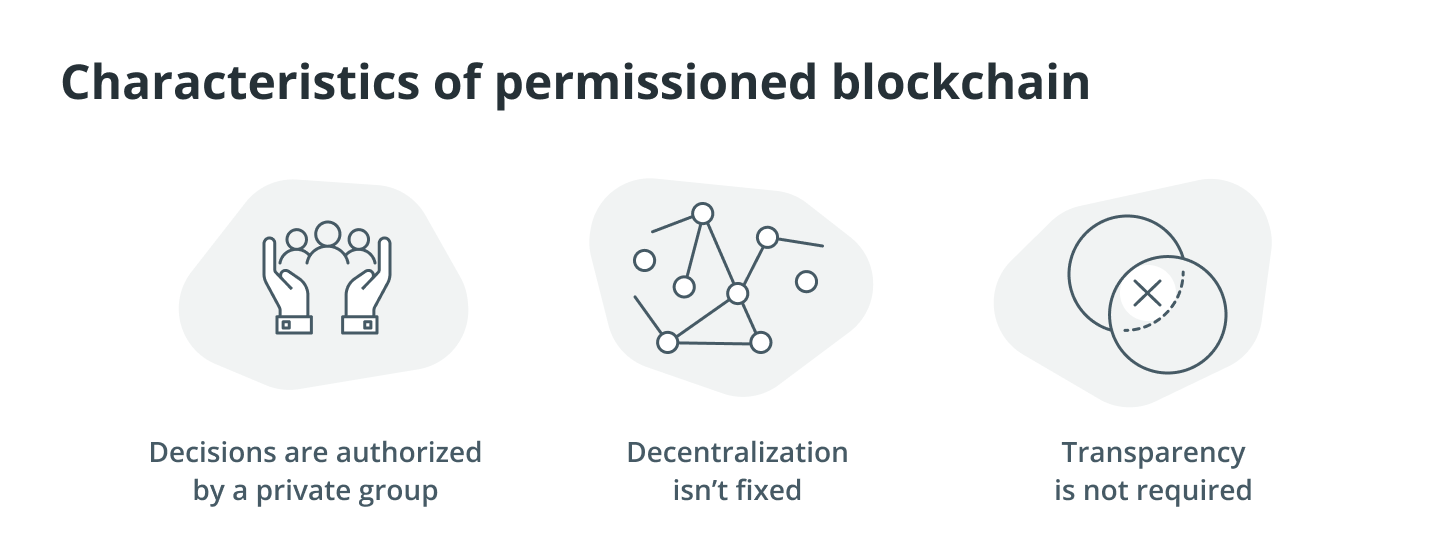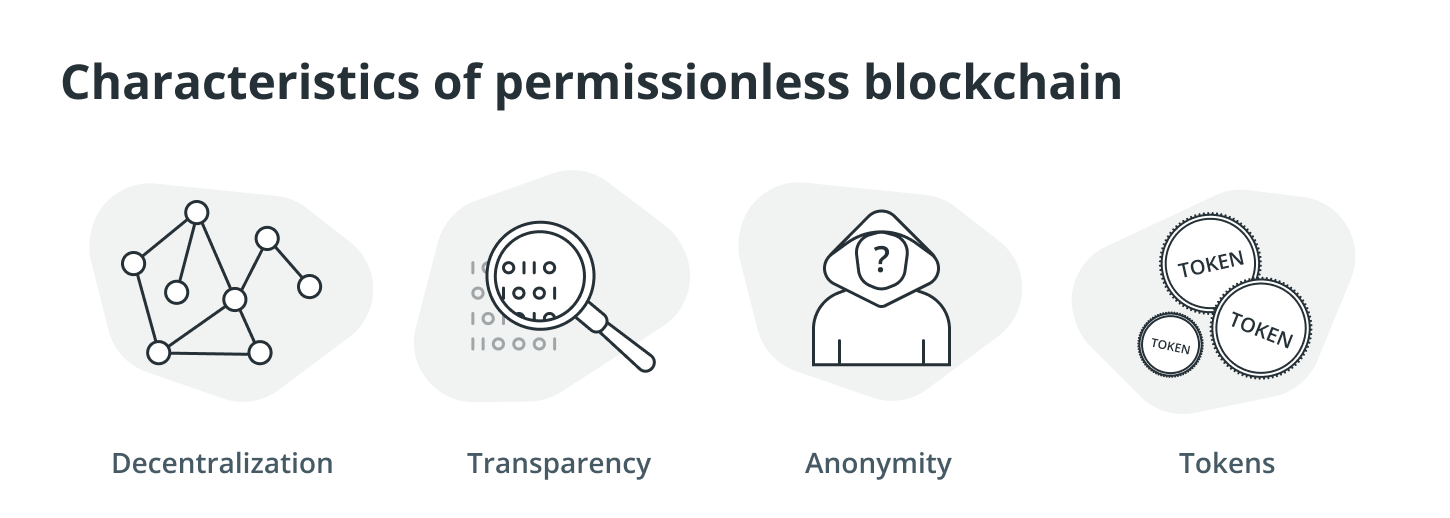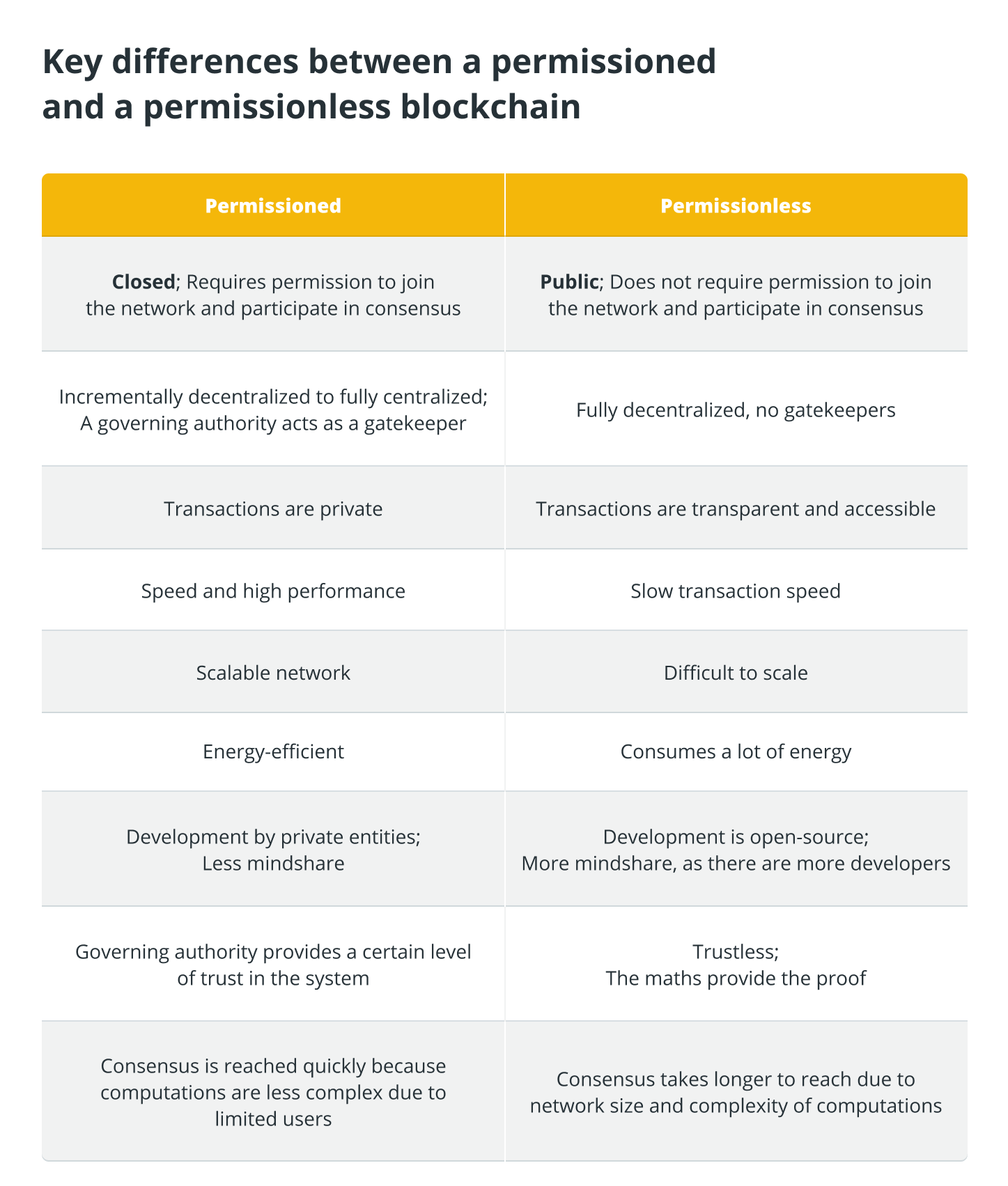A blockchain is a digital ledger that is distributed and decentralized, and it records transactions. On the blockchain in question, this ledger has many copies that are scattered across the various computers that make up the network.
In a purely technical sense, blockchains can function as a decentralized method of information storage. The decentralized and public nature of a blockchain makes it extremely difficult, if not impossible, to manipulate, cheat, or steal from the system.
You may be aware that Bitcoin (BTC) was the very first blockchain-based cryptocurrency that was released to the public. Because it enabled data to be shared publicly among users, it gained a lot of traction very quickly in the cryptocurrency community. This gave participants in the network the ability to independently verify and validate transactions.
Transactions are included in each block that makes up the blockchain. Every participant’s ledger gets updated whenever there is a new transaction that takes place. This happens automatically. Distributed ledger technology, also referred to as DLT, is the name given to this decentralized database. A hash is used to record transactions in a distributed ledger technology (DLT) platform known as blockchain (cryptographic signature).
In a nutshell, distributed ledger technologies (DLTs) include a wide range of technologies and frameworks that make it possible to implement a distributed design. We will discuss both permissionless and permissioned blockchains in greater detail throughout this article. These two paradigms are among the most prominent in the blockchain space.
What is a blockchain with permissions?
Blockchains with permissions are either closed or have an access control layer. Participants are only permitted to take actions that they are authorized to take thanks to this additional security measure.
A user would require authorization from the network owner to join the network in a permissioned blockchain. Technically, a user can only access information on the blockchain if they are given permission to read, write, and access it. A private permissioned blockchain establishes the roles that determine what each participant can access and how they can contribute to the blockchain.
Customization is also supported by a permissioned blockchain. As a result, identity verification may be used to grant access to the permissioned network rather than requiring each user to be approved by the network owner. Ideally, users would still be restricted to specific network functions based on the permissions set forth by the blockchain.
Permissioned blockchains, also known as “private blockchains” or “permissioned sandboxes,” are thought of as being partially decentralized. Unlike Bitcoin, this is due to the network’s distribution among known participants.
Ripple, a sizable cryptocurrency that supports permission-based roles for network users, is a good example of a permissioned blockchain. Many companies favor permissioned blockchain networks because they let network administrators set up restrictions and change settings as necessary.
How blockchain consensus work on a permissioned blockchain
Unlike permissionless blockchains, a permissioned blockchain does not employ the same consensus models. Organizations that use permissioned blockchains frequently employ consensus models like federated, round-robin, and Practical Byzantine Fault Tolerance (PBFT).
- PBFT consensus: PBFT is a consensus algorithm that relies on voting. As long as the required minimum percentage of nodes are operating honestly and properly, the network’s security is assured in this model.
- Federated consensus: Each blockchain node in a federated consensus trusts a particular group of signers. By using a single block generator to receive, hold, and filter transactions, these signers aid the nodes in reaching the consensus stage.
- Round-robin consensus: In a round-robin consensus, nodes are chosen to form blocks in a pseudo-random manner. Before a node can be selected once more to add a new block, it must wait for a number of cycles.
Characteristics of a blockchain with permissions
Security is closely related to some of the defining characteristics of a permissioned blockchain. Permissioned blockchains are seen as more secure alternatives to open blockchain platforms like Bitcoin because they have an access control layer.
As a result, those who need to establish roles, confirm identities, and secure access within a network prefer it. Additionally not anonymous, permissioned blockchains are typically created by private organizations and businesses.
 Decisions are authorized by a private group.
Decisions are authorized by a private group.
Permissioned networks do not rely on consensus, in contrast to permissionless networks. Instead, choices are made by the network’s owners at a single, predetermined level.
Decentralization isn’t fixed.
Permissioned blockchains can be fully centralized or partially decentralized, unlike Bitcoin, a completely decentralized blockchain. The network’s degree of decentralization and consensus algorithms are typically decided by the members.
Transparency is optional.
Permissioned blockchains do not need to be transparent, in contrast to permissionless blockchains. Transparency is optional because the majority of permissioned blockchain networks are designed to be opaque for security reasons. Transparency levels are typically influenced by the objectives of the company managing the blockchain network.
Advantages and disadvantages of permissioned blockchain
Permissioned blockchains have advantages over public ones due to exclusivity, but there are some drawbacks as well. Here is a contrast:
Advantages of permissioned blockchain
The highest-ranking benefit of permissioned blockchains is their high level of security and privacy. An outsider cannot access or modify transaction information without first being verified or given permission.
Flexibility in terms of decentralization is another benefit. Businesses have more freedom to participate without having to worry about the risks associated with a highly centralized network thanks to its incremental or complete centralization options.
They can also accommodate configurations and integrations based on the requirements of an organization and are highly customizable. Finally, because only a small number of nodes are required to handle transaction verifications, they are both scalable and high-performing.
Disadvantages of permissioned blockchain
Despite the benefits we listed above, this kind of blockchain still carries some dangers and drawbacks.
The risk of corruption and the network’s lack of transparency are primarily to blame. There is a high risk of collusion and overriding of consensus precisely because it is restricted to only some people and is managed by a private group. As a result, the network’s administrators can easily change the consensus rules.
It is sufficient to say that while a permissioned blockchain is considered secure, its security also depends on the integrity of its users. A person or group with control over the network has the ability to change data in order to their advantage. This makes the network’s lack of transparency a significant drawback.
Additionally, they are subject to regulation and censorship, particularly for companies that must adhere to strict rules and regulations. As a result, there is no freedom to use the uncensorable features of public blockchains.
What is a permissionless blockchain?
Another type of DLT paradigm, a permissionless blockchain, is on the other end of the spectrum. Most significant cryptocurrencies today operate on permissionless blockchain networks, including Bitcoin.
True to its name, it enables anyone to access information and participate in the network. In a nutshell, it is public and decentralized. There are no gatekeepers or censors, hence the name “permissionless.” Nobody needs to submit identification documents or pass Know Your Customer (KYC) checks in order to access the blockchain.
Technically, anyone can use it to do anything they want within the network as long as the protocol permits it. The original vision of Satoshi Nakamoto for the blockchain is thought to be more closely represented by permissionless blockchains.
The common trade-off of permissionless blockchains is speed right now because it is open to the public. They are typically slower than their permissioned counterparts, which are much smaller in size.
So how do blockchains without permission operate? Usually, the public verifies the transaction data that is stored on these blockchains. The network depends on the general public to come to a consensus regarding the legitimacy of transactions because there is no regulatory body or authority.
These networks typically employ the proof-of-work (POW) and proof-of-stake consensus mechanisms (POS). With these mechanisms in place, honesty is typically encouraged and keeps the system functioning as intended. Bitcoin and Ethereum are two examples of networks that don’t require permission.
Characteristics of permissionless blockchain
Permissionless blockchains differ from permissioned blockchains in that their users’ identities are concealed and their transactions are transparent. They support open source development as well.
 Decentralization
Decentralization
Blockchains without permission are typically decentralized. As a result, a single entity cannot modify the ledger, stop the network, or change its protocols on its own. Consensus protocol, which relies on the majority and their sense of integrity, is firmly rooted in this. Usually, for such a consensus to be reached, more than half of its users must concur.
Transparency
Users can access any kind of data (except private keys) in a network with no access restrictions. Transparency of transactions in a permissionless network is valued because the very nature of a decentralized network is to shun central authority figures.
Anonymity
Permissionless blockchains do not request users’ identification details or personal information when they create an address, in contrast to permissioned networks.
Tokens
Blockchains without permission allow the use of tokens or digital assets. These frequently act as inducements for users to engage with the network. Depending on the market, assets and tokens may appreciate or depreciate in value over time.
Advantages and disadvantages of permissionless blockchain
Blockchains without permission are very decentralized and open. Naturally, they have a range of benefits and drawbacks. Here is a contrast:
Advantages of permissionless blockchain
One of its main benefits is the high level of transparency offered by a permissionless network. Transparency enables quick settlement between unidentified parties because it is highly decentralized and spreads across a vast network.
Of course, decentralization has advantages. One of them is that data is not kept in a single central repository, making the public record secure, trustworthy, and available to everyone. It is also regarded as being virtually unhackable as a result.
Because it is so widely accessible to users worldwide, the network is also safe and immune to censorship. As a result, it will be challenging for attackers to access the network. The network’s consensus mechanisms cannot be overridden without attacking 51% of it, and there is no single repository to focus on.
Disadvantages of permissionless blockchain
The majority of a permissionless blockchain’s drawbacks have to do with how it performs. One of its biggest obstacles is the amount of power needed to run a permissionless blockchain. To reach consensus, a lot of energy and computing power are needed.
It is typically slower than permissioned networks and more difficult to scale because of how big the network is in general. Permissionless blockchains use a lot of energy and computing resources due to their size and the need to verify transactions. As a result, some businesses find it challenging to implement permissionless networks as an enterprise solution.
Due to the public nature of transaction information, there is also less privacy.
In some ways, anonymity can be seen as a drawback of permissionless systems. In the network, anyone can participate, so it is impossible to easily weed out bad actors or scammers.
Key differences between a permissioned and a permissionless blockchain

Similarities between a permissioned and a permissionless blockchain
Here are some traits that both blockchains share that are common ground.
First, both are regarded as distributed ledgers, which means that numerous copies of the same data are kept scattered throughout the network. Both blockchains employ consensus mechanisms, which allow participants to agree on issues like how transactions should be verified or how the ledger should appear.
Aside from being partially immutable for permissioned networks, both blockchains are also immutable. Because these networks are immutable, data stored there can’t theoretically be changed unless consensus mechanisms are overridden or the system is compromised.
Which blockchain, permissioned or permissionless, is better for you?
Because the two blockchain architectures have different use cases, they are each better suited to particular applications.
Blockchains without permission, for instance, are better suited for use in financial applications. It is also very applicable to situations that demand a lot of decentralization, like:
- Giving and crowdsourcing
- Digital asset trading
storing blockchain data
Permissioned blockchains, meanwhile, are appropriate for uses that demand a high level of security and privacy, such as:
- Verification of identity
- Claims resolution
- Supply chain management
As with anything, weighing the advantages and disadvantages of both DLT paradigms before investing your money in them is advised. Researchers Solat, Calvez, and Nat-Abdesselam made a compelling argument for why permissionless blockchains are superior to permissioned blockchains in a study that was published in the Journal of Software.
The following arguments were made in the paper “Permissioned vs. Permissionless Blockchain: How and Why There Is Only One Right Choice”:
Recalculating upcoming blocks in a closed network may be an option.
A blockchain system ensures the integrity of data by validating transactions and guarding against tampering with historical transactions. When one block is changed in a permissionless network, the rest of the succeeding blocks become invalid.
The researchers claimed that “it is possible to recalculate all the next blocks (…) such that all altered blocks will become valid again” in a permissioned network. In other words, the integrity and security of the data cannot be guaranteed and transactions cannot be protected against fraud by simply chaining blocks together based on the hash of the previous one.
Simply chaining blocks to each other isn’t enough
It is insufficient to chain blocks together based on the previous block’s hash. This method “cannot ensure the integrity and security of the data and protect transactions against tampering,” according to the researchers’ paper.
The researchers claim that this makes the chaining of transactions meaningless and transforms this kind of blockchain into a “unhelpful structure.” The drawbacks of permissionless blockchains as well as the appeal of permissioned blockchains were acknowledged by the researchers. However, they emphasized that closed networks are still not a good alternative despite the difficulties of scalability and performance with permissionless blockchains.
A permissioned blockchain does not allow open participation
According to the researchers, a closed network cannot accomplish the purpose of a blockchain. This is so that “open participation in either submitting transactions or participating in [the] transaction validation process” is not permitted on a permissioned blockchain. Furthermore, “participants cannot reasonably expect the network to resist censorship if they send a transaction without some permission beyond mere possession of some way to pay transaction fees.”
The paper asserts that a blockchain system must always have access to three things:
- Transparency
- Publicity and
- Permissionlessness
According to this claim, openness turns into a “required and mandatory feature for a blockchain network.” Networks on blockchains without permission For example, proof-of-work (PoW) is used by Bitcoin and Ethereum to thwart Sybil attacks. Since then, Ethereum has switched to proof-of-stake (PoS), another consensus mechanism.
By using these consensus mechanisms, validators are prevented from building spam blocks. The researchers also “force” validators to use power to thwart the Sybil attack.
Having said that, it is ultimately up to the organization to determine whether or not the risks and shortcomings of each network outweigh the advantages they provide. We’ll talk about whether or not the two paradigms can coexist in the following section.
Can blockchains with and without permission coexist?
It’s crucial to consider the initial implications of Satoshi Nakamoto’s white paper before we delve further into this subject. The “Father of Bitcoin,” who goes by the pseudonym Nakamoto, also suggested doing the exact opposite of centralized organizations like banks and other financial gatekeepers in order to solve many of the issues with contemporary finance.
A decentralized peer-to-peer protocol for monitoring and confirming digital transactions was first described by Nakamoto back in 2008. In Nakamoto’s paper, the blockchain was a solution to crises that exposed the flaws in a centralized financial system.
Therefore, Nakamoto’s blockchain was a stateless, permissionless, and trustless blockchain. Double spending could be avoided by the system, which would also produce transparent, easily accessible records of all transactions that anyone could review at any time.
However, as with anything tech-related, once it became clear that blockchain technology could be used for a variety of purposes, tangents from the original goal were investigated. To “bridge the gap” between conventional blockchain technology and use cases by organizations that preferred restricted access, permissioned blockchains were created.
As we’ve stated above, there is a compelling case against networks that act as gatekeepers. The fundamental argument is that consensus mechanisms like PoW and PoS accomplish that goal.
As with anything tech-related, the public (and the powers that be) typically rejects “public” technologies. Since the 1990s, we have observed this in discussions and widespread acceptance of the following:
- Internet vs. intranets
- Cloud infrastructure vs. on-premise infrastructure
The more accessible versions of these technologies will win out because they are more adaptable, offer more advantages, and have lower entry requirements. The same is true of blockchains that don’t require permission, which are increasingly popular.
Although open technologies may be more common, this does not negate the value of closed technologies. One could argue that some particular use cases and applications continue to benefit from closed technologies.
The efficiency of a permissioned blockchain is its main advantage. It can:
- Promote swift and secure trading among group members
- Establish a single point of contact for risk management, compliance, and other crucial teams within an organization
- Reduce redundancy in paperwork
Therefore, it could be argued that permissioned blockchains are preferable in some business contexts and use cases. For starters, because they are only accessible to a select group, permissioned blockchains do not need as complicated of an algorithm as permissionless blockchains. This results in faster consensus building and more energy-efficient processing of data and transactions.
Both intranets and the internet follow the same rule. The internet is practically available to everyone and is unquestionably helpful to a larger population, right? We also can’t ignore the fact that intranets are helpful for businesses. They are widely used in offices for remote collaboration, file storage, and communication.
In conclusion, it is possible to affirm that permissioned and unpermitted blockchains can coexist. They simply serve different objectives.








